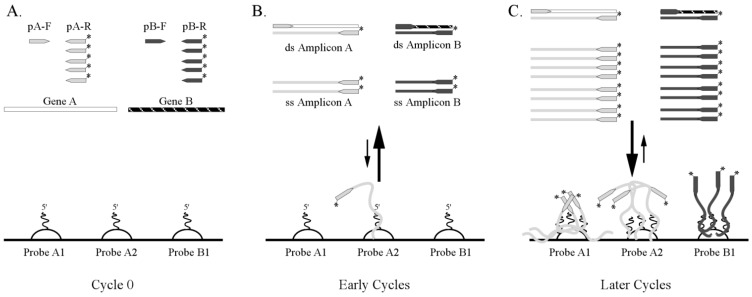Figure 1.
Integrating amplification and hybridization chemistry within an amplification microarray and single microfluidic chamber. (A) Gene-specific reverse amplification primers (pA-R and pB-R) are labeled with a fluorophore and provided in excess relative to the forward primers (pA-F and pB-F). The microarray may contain one or more probes for each target gene (GeneA and Gene B) and resulting amplicon. Two probes are shown for Gene A and one probe is shown for Gene B. (B) The initial rounds of the amplification create both double-stranded and single-stranded amplicon, but hybridization to the microarray is kinetically limited because single stranded amplicon has not yet accumulated. (C) Towards the final rounds of amplification, single stranded amplicons abound, so hybridization to the microarray is kinetically favorable. Hybridization times can be extended beyond the amplification reaction to achieve thermodynamic equilibrium, if desired.

